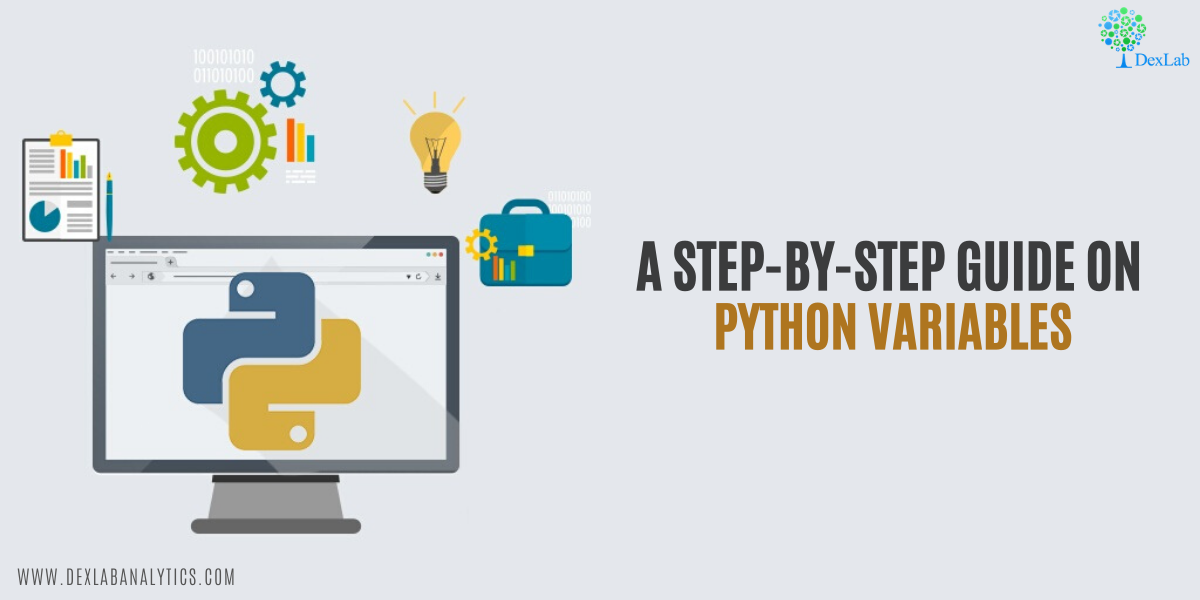
Variable is the name given to the memory location where data is stored. Once a variable is stored, space is allocated in memory. Variables are named locations that are used to store references to the object stored in memory.
With the rapid rise of the advanced programming techniques, matching with the pacing advancements of Machine Learning and Artificial Intelligence, the need for Python for Data Analysis an Machine Learning Using Python is growing. However, when it comes to trustworthy courses, it is better to go for the best Python Certification Training in Delhi.
Now, coming to this article, here are some of the topics that will be covered in this article:
- Rules to Define a Variable
- Assigning Values to a Variable
- Re-declaring a Variable in Python
- Variable Scope
- Deleting a Variable
Rules to Define a Variable
These are the few rules to define a python variable:
- Python variable name can contain small case letters (a-z), upper case letters (A-Z), numbers (0-9), and underscore (_).
- A variable name can’t start with a number.
- We can’t use reserved keywords as a variable name.
- The variable name can be of any length.
- Python variable can’t contain only digits.
- The variable names are case sensitive.
Assigning Values to a Variable
There is no need for an explicit declaration to reserve memory. The assignment is done using the equal to (=) operator.

Multiple Assignment in Python
Multiple variables can be assigned to the same variable.

Multi-value Assignment in Python
Multiple variables can be assigned to multiple objects.
 Re-declaring a Variable in Python
Re-declaring a Variable in Python
After declaring a variable, one can again declare it and assign a new value to it. Python interpreter discards the old value and only considers the new value. The type of the new value can be different than the type of the old value.

Variable Scope
A variable scope defines the area of accessibility of the variable in the program. A Python variable has two scopes:
- Local Scope
- Global Scope
Python Local Variable
When a variable is defined inside a function or a class, then it’s accessible only inside it. They are called local variables and their scope is only limited to that function or class boundary.
If we try to access a local variable outside its scope, we get an error that the variable is not defined.

Python Global Variable
When the variable is not inside a function or a class, it’s accessible from anywhere in the program. These variables are called global variables.

Deleting a Variable
One can delete variable using the command “del”.
In the example below, the variable “d” is deleted by using command Del and when it is further proceeded to print, we get an error “variable name is not defined” which means the variable is already deleted.
Conclusion
In this article we have learned the concepts of Python variables which are used in every program. We also learned the rules associated to the naming of a variable, assigning value to a variable, scope of a variable and deleting a variable.
So, if you are also hooked into Python and looking for the best courses, Python course in Gurgaon is certainly a gem of a course!
This technical blog is sourced from: www.askpython.com and intellipaat.com
Interested in a career in Data Analyst?
To learn more about Data Analyst with Advanced excel course – Enrol Now.
To learn more about Data Analyst with R Course – Enrol Now.
To learn more about Big Data Course – Enrol Now.To learn more about Machine Learning Using Python and Spark – Enrol Now.
To learn more about Data Analyst with SAS Course – Enrol Now.
To learn more about Data Analyst with Apache Spark Course – Enrol Now.
To learn more about Data Analyst with Market Risk Analytics and Modelling Course – Enrol Now.
Machine Learning Certification, Machine Learning course, Machine Learning course in Gurgaon, Machine Learning Courses, Machine Learning Training, Machine Learning Using Python, Python, Python certification, python certification course, Python courses, python data science course, Python for data analysis, Python Training Institute, Software tools : SAS, R, Python etc


Comments are closed here.